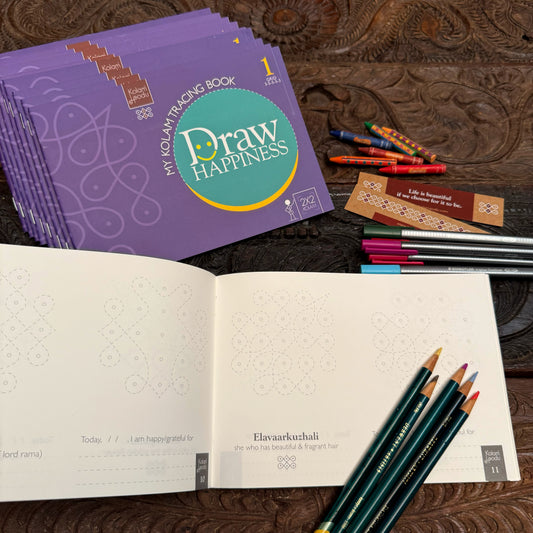Drawing kolams engages and nurtures several brain regions, including the prefrontal cortex, frontal cortex, amygdala, and parietal cortex. The prefrontal cortex benefits from the strategic planning and working memory demands of kolam creation, enhancing executive functions and cognitive flexibility. The frontal cortex is stimulated through imaginative thinking and artistic expression, fostering creativity and artistic vision. The meditative nature of kolam reduces amygdala activation, lowering stress and emotional reactivity. Lastly, the spatial planning and intricate movements in kolam enhance the parietal cortex's functions related to spatial awareness and sensory integration, promoting a holistic cognitive and emotional experience.
The brain is a complex organ composed of different regions, each responsible for various functions. Drawing kolams can have positive effects on several brain regions, including the prefrontal cortex, frontal cortex, amygdala, and parietal cortex. Here's how this traditional art form can contribute to the development of these brain regions:
Let's delve into the different brain regions and how drawing kolams can contribute to the development of the prefrontal cortex, frontal cortex, amygdala, and parietal cortex in detail:
-
Prefrontal Cortex:
- Function: The prefrontal cortex is located at the front of the brain and plays a critical role in higher-order cognitive functions, including decision-making, problem-solving, planning, working memory, and impulse control.
- Kolam Connection: Drawing kolams involves strategic planning and organizing intricate patterns within a confined space. This activity requires individuals to use their working memory to remember and execute specific designs. The process of deciding on the pattern, calculating the symmetry, and ensuring proper placement fosters prefrontal cortex activity. Consistent engagement in drawing kolams can enhance executive functions and cognitive flexibility.
-
Frontal Cortex:
- Function: The frontal cortex is involved in a wide range of functions, including creative thinking, imagination, artistic expression, and personality development.
- Kolam Connection: Drawing kolams allows individuals to express their creativity and artistic abilities. Creating unique and visually appealing kolam designs involves imaginative thinking and artistic expression, stimulating the frontal cortex. The process of designing and implementing creative patterns helps nurture this region of the brain, leading to improved creative skills and artistic vision.
-
Amygdala:
- Function: The amygdala is an almond-shaped structure deep within the brain and is crucial for processing emotions and emotional responses, including fear, stress, and anxiety.
- Kolam Connection: Engaging in drawing kolams can have a calming and meditative effect on individuals. This rhythmic and repetitive activity is akin to mindfulness and meditation practices, which have been shown to reduce amygdala activation and decrease stress and anxiety. Regularly participating in the relaxing process of creating kolams can help balance emotional responses and lead to a more controlled and less reactive amygdala.
-
Parietal Cortex:
- Function: The parietal cortex is involved in sensory perception, spatial awareness, and integrating sensory information from various parts of the body.
- Kolam Connection: Drawing kolams requires spatial planning and coordinating intricate hand movements. As individuals carefully place each element of the kolam pattern, the parietal cortex is engaged in processing visual and tactile information. This practice enhances spatial awareness, motor coordination, and sensory integration, leading to improved overall parietal cortex functioning.
Drawing kolams can serve as a holistic brain exercise that activates and nurtures these different brain regions. The cognitive demands of planning, designing, and executing kolam patterns contribute to the development of the prefrontal cortex and frontal cortex. The meditative and calming nature of this art form positively impacts the amygdala, reducing stress and promoting emotional well-being. Moreover, the process of spatial planning and intricate movements enhances the parietal cortex's functions related to spatial awareness and sensory integration. As individuals immerse themselves in the traditional practice of drawing kolams, they engage and nurture these brain regions, leading to a more well-rounded cognitive and emotional experience.
Kolam in Tamil Nadu is muggulu in Andhra Pradesh and Telangana, rangoli in Maharashtra, hase and rangavali in Karnataka, alopana in Bengal, to name a few.
Life is beautiful if we choose for it to be. Let’s draw happiness!







